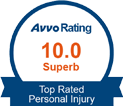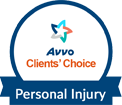Bus accidents in California are often caused by the same factors which cause car accidents. However, a bus accident is more severe because of its weight and size. Moreover, it is difficult to tell what caused the accident. That is why it's paramount for you to retain a competent attorney if you or your loved one have been injured in a bus accident. It does not matter whether you were a passenger in the bus, pedestrian, another motorist, or a bicycle rider, The Personal Injury Attorney Law Firm can help you file a personal injury claim.
What are the Most Common Causes of Bus Accidents?
Buses are an efficient form of transportation. Whether you are using a private charter, school bus, or city bus, it is a safe method to get from one point to another. However, bus accidents take place. Statistics reveal that bus accidents are rapidly increasing, especially among school buses.
Read the article below to learn the most common causes of bus accidents in California. It will also help you seek compensation from the at-fault party.
Driver's Fatigue: The Enemy of Bus Safety
According to an article published on Limo, Charter and Tour Magazine, fatigued driving is the leading uncontrolled risk in the bus and motor-coach industry. It is also the leading cause of fatal road accidents. It causes approximately fifteen percent of all bus accidents and accounts for eighty percent of the total damages awarded.
As a result, the Federal Motor Carrier Safety Administration has set up stringent rules requiring drivers to have plenty of rest. However, these rules don't work because drivers face the following challenges in their working conditions:
- School bus drivers and transit bus operators work in and near compact areas like a city, school district, or county. Their jobs pay low and have little prestige. To make ends meet, the driver, as a result, is forced to do more than one job. Therefore, although the employer's records show that the driver worked for only a few hours in a day, the driver could be laboring under fatigue because they also engaged in two other jobs.
- Tour bus and commercial motor-coach operators carry people from one city to another, sometimes on multi-day trips or long overnight. Bus company rules could limit the motorist to work for sixteen hours a day, but do not expect the remaining hours to be of restful sleep. More often than not, the motorist spends much of that time filling out paperwork for the trip or supervising vehicle maintenance.
- Also, companies pay drivers by miles. Therefore, a motorist will drive beyond their limits so that they can make more money.
When a driver falls asleep and causes a bus accident, they are not demonstrating their duty of care, and neither is their employer who knew or should have been aware of the motorist's drowsiness but permitted the driver to operate the bus. Both the company and the driver should be held responsible for the losses you have suffered. These losses could include medical bills, lost wages, pain and suffering, damaged property, and emotional distress.
Distracted Driving
Probably, texting is the most dangerous and common type of distracted driving. Texting while driving requires the motorist to divert their cognitive, manual, and visual abilities from driving to texting.
According to the National Safety Council, texting while driving attributes to more than 1.5 million car accidents in the United States every year. In 2017, one in every four car accidents involved texting while operating a vehicle.
Other examples of distractions while operating a bus that can result in an accident include:
- Using an electronic device whether hand-held or hands-free like a DVD player, cell phone, or GPS
- Adjusting a radio or a seat in the bus
- Interacting with passengers
- Answering a passenger's question
- Monitoring or taking care of a child, particularly in a school bus
- Smoking, eating or drinking
- Grooming
- Reading magazines, maps or any literature
- Watching videos
- Changing or putting on clothes
How Poor Driver Training Causes a Bus Accident
There is a reason why nobody wants an eight-year-old to drive a sports car. The minor is not well-trained, and the sports car has a lot of muscles. As a result, a lot can go wrong.
Likewise, an inexperienced bus driver with no or little experience and without proper training is likely to cause a bus accident. The following are some of the things that can go wrong when the driver gets behind the wheel:
- Changing or turning lanes too fast for the load
- Speeding on adverse weather conditions
- Driving off the road
- Drowsy driving
- Breaking hours of service regulations
- Improper braking which results in jackknifing or sliding
- Failing to stop in time
All bus companies should hire and retain competent and experienced drivers. It is the company's responsibility to conduct thorough research when engaging new motorists. The company should also ensure the driver has their driver's license, adequate training, and all the necessary endorsements. Therefore, a company that sends a driver on the road is accountable for the motorist's actions.
The Relationship Between Speeding and Bus Accidents
According to research done by the National Highway Traffic Safety Administration (NHTSA), it's common for motorists to speed on a trip. Speeding is calculated and deliberate conduct where the motorist is aware of the risk but goes ahead to ignore the hazard.
It is worth noting that speeding comprises of:
- The first category involves driving at a higher rate than the posted speed limit on a given road.
- The second type is operating a motor vehicle at a rate too high for safe control of the bus given the road conditions. That means during the night when the road has oil or gravel when it is raining, snowy, or foggy, a motorist could be speeding even if they are driving below the posted speed limit provided the bus is going too fast to stop safely or control.
In a study conducted by the Insurance Institute of Highway Safety (IIHS), based on the laws of physics, there is no doubt about the relationship between a vehicle's speed and the seriousness of a crash. Therefore, the higher the motor vehicle's speed, the greater the collision impact, as well as the more severe injuries are.
The study discovered that after Congress enacted the nationwide 55 miles per hour speed limit in 1974, the rate of traffic fatalities has gone down by sixteen percent.
The study went ahead to note that the faster a motor vehicle is traveling, the longer it takes to stop the vehicle, possibly causing an unavoidable accident. Excessive speed causes the motorist to lose control when maneuvering or turning. Additionally, it reduces the time the motorist has to respond to unexpected emergencies or changes in traffic.
Bad Weather
Although rarely a bus accident can also be caused by bad weather. It is because inclement weather makes it difficult for the motorist to drive the bus. The driver is likely to experience the following:
- Road capacity could be decreased as a result of debris on the road blown there by the wind, road closure, or snow accumulation
- Traffic signal timing could be disrupted
- Freeway speed reduction happens in fog, sleet, snow, and rain
When an accident takes place due to bad weather, the bus driver should be held accountable. Every motorist on the road has a responsibility to others to avoid causing an accident. Therefore, the bus driver should maintain a higher level of care suitable to the weather conditions.
Blind Spots
Blind spots are another cause of bus collision in California. A blind spot could prevent a driver from seeing around the bus.
A blind spot is often found in the left or right shoulder of a motorist. It is caused by the pillar, which holds the doors and windows of the bus together. Reduced visibility could also be as a result of passengers on the bus, cargo on the bus, or the headrest.
Even though crashes with other vehicles are the most common, the motorist could also hit cyclists or pedestrians if they fail to check the blind spot.
Please note that a blind spot accident can be prevented if the driver:
- Uses a convex mirror
- Adjusts side and rear-view mirrors
- Uses blind spot mirror
- Physically looks over
- Slows down
Additionally, the driver should know how dangerous it can be to operate the bus in another vehicle's blind spot and should be careful on multi-lane roads.
If you have been injured in a blind spot bus accident, it is wise to contact a proficient attorney who can offer comprehensive legal counsel on the matter.
Drunk Driving
Any driver with a high blood alcohol content (BAC) has a reduced ability to maintain control of the bus. They have decreased reaction time and overall judgment.
The driver may think that it is safe to operate the bus, but their faculties have been impacted significantly by the alcohol. The term impaired means the drunk motorist does have the same abilities and protections as a sober driver.
A drunk driver is also likely to engage in other risky conduct like driving on the wrong side of the road or speeding.
It's not easy to identify a drunk bus driver. That means even if you try to respond in seconds, you might not be in a position to avoid an accident.
Dangerous Road Conditions
Even the most cautious motorist can cause an accident when faced with an unsafe road condition. Below are hazardous road conditions that can create situations under which a bus accident is likely to occur:
- Potholes- A pothole is a structural failure on the roadway surface. The soil and dirt beneath the asphalt shift as cars pass over the roadway. With time, the asphalt starts to crack and become loose.
- Missing guardrails and barriers- Most roads in California, especially in urban areas, are built to accommodate high-speed traffic. Barriers and guardrails dividing vehicles moving in opposite directions assist in preventing accidents. Failure to maintain or install guardrails increases the possibility of severe bus accidents.
- Confusing road signals- All road signals should be uniform. It allows drivers irrespective of where they come from to understand what the signs mean. Also, signs in one location shouldn't be contradictory.
- Missing road signals- Road signals like speed limit signals, intersection warning signals, and stop signs offer motorists with the information they require to make informed decisions. If the signals are missing, the driver may cause an accident. For instance, if there isn't a stop signal, a bus driver could barrel through an intersection hence striking another vehicle.
- Unnoticed changes in a road surface- Road surfaces can be paved with different materials. Failing to warn motorists about the changes can cause an accident. It is because different road surfaces react differently to water and weather. For instance, concrete used on a bridge can freeze before the asphalt used on the rest of the road. A bus driver who does not know this may fail to slow down before driving over the bridge. Speeding on a frozen surface is dangerous.
- Poor road design- A road ought to be designed in a manner that permits a driver to navigate their vehicle safely. Sharp turns, blind curves, improperly graded roads, and drop-off create unsafe driving conditions.
- Dangerous work areas- Construction areas should be well-marked, visible to all road users, and designed with safety in mind.
- Poorly painted or faint lines- Roads in California are built to accommodate many vehicles. Therefore, these roads should have sensible and visible lines. Lines guide traffic patterns as well as tell drivers how the road should be navigated. With time, the lines fade hence confusing.
If dangerous road conditions caused the accident, the driver is not responsible for your injuries. Instead, you should take legal action against the government entity tasked with maintaining and designing the road.
Uneven Weight Distribution Within the Bus
The performance of a bus can be affected when its weight is not equally distributed, making it:
- Difficult to stop or make a sudden turn
- Travel down an incline faster than expected
- Be off-balance
The weight of the bus should be well-distributed so that no axle is overloaded, making the bus to be off-balance. Improper weight distribution is a leading cause of rollover and jackknife accidents.
The bus company that owns the bus and employs the motorist should be held accountable. Nonetheless, other parties who could share liable include:
- The bus driver
- Bus owner
- A person who leased the bus from its owner
- Bus manufacturer if the tires or other parts caused the collision
Bus Fires
Bus fires are fatal, especially if you are seated at the vehicle's rear. Escape hatches can be small, and fumes could overcome you before exiting.
Usually, bus fires originate from two parts, namely:
- Engine compartment- This type of fire can be prevented by systematic maintenance like dirty engine, covered with oily or greasy substances from leakage or creating a ripe condition for fires from small sparks or high heat of travel
- Wheel wells and tires- An under-inflated tire can cause an accident since radical tires hold their shape even with low air pressure. Nonetheless, where a tire is operated at the low air pressure, heat quickly builds up, especially at highway speed hence resulting in the shredding of the tire or even a fire.
Bus Company Negligence
Another leading cause of bus accidents in California is bus company negligence. Although buses transport thousands of passengers every year, bus inspection and record-keeping protocols are not strict. That means bus firms often overlook federal regulations, fleet maintenance, and training their drivers.
On top of that, buses need a high level of maintenance and upkeep to keep them operating safely. Older motor coaches, Greyhound buses, and school buses that don't have seat belts, among other safety equipment, could increase the risk of death or injuries from an accident. A collision could also take place because of poor maintenance or defective parts that the bus company has failed to fix.
Defective Parts
It's normal for a bus to break and for the defective part to be replaced. When buying the spare part, the bus owner may choose to purchase an after-market or original spare part. Usually, the former is made of substandard quality and can break down easily. No matter the part used to repair the bus, all manufacturers should adhere to the Federal Motor Vehicle Safety Standards and Regulations requirements.
Common defective parts that contribute to accidents include:
- Defective tires
- Electrical system failure
- Brake system failure
- Airbags deploying without impact
- Fuel leakage hence causing a fire
- Steering mechanism failure
Any defective bus part can inflict severe injuries or even kill you. You could suffer injuries such as:
- Sprains
- Neurological injuries
- Traumatic brain injury
- Bone fractures
- Soft tissue injuries
- Spinal cord injury
Proving a Defective Part Caused the Bus Accident
Evidence is the most significant factor when solving a personal injury case where a defective part failed to function well. You can support your claim using a police report, photos of the accident scene, medical records, and expert testimonies.
In a defective part accident, you can file a product liability case. Your case should fall under either warning failure, manufacture defect, or design defect. Your personal injury attorney should assist you in filing a claim under the relevant product liability law.
You can also join hands with other bus accident victims and file a class-action lawsuit. It is recommended if your injuries are minor, and the costs of bringing an individual claim are not justifiable.
Improper Turns
Even if you are a careful driver, there is still a possibility of being hit by a negligent bus driver who is making an improper turn. Making an improper turn is breaking road rules, and it could result in either broadside, side, or head-on collision. There are several types of improper turns, namely:
- Making a left turn at a "no left turn" intersection- It is illegal to make a left turn at some intersections. It helps ensure the safety of all road users
- Illegal U-turn- To reduce the number of accidents on a given intersection or road, motorists will sometimes find the sign in question posted.
- The bus driver is also likely to cause an accident if they make a turn from the wrong lane
- Failing to use a turn signal in time
- Making a turn in an oncoming traffic lane
Road Rage
When a motorist is annoyed and directs their aggression at other road users, that aggression is called road rage. Road rage makes it impossible for the bus driver to think straight as well as pay attention to driving safely. As a result, the driver may act aggressively as a way of teaching the other driver a lesson for a perceived or actual wrong.
In addition to that, road rage can make the bus driver follow other cars too closely, to speed, turn sharply, or miss traffic signals. All these behaviors put the driver and other road users at risk of being hurt.
If you are a victim of a road rage bus accident, you may be entitled to receive compensation for the losses incurred.
Another Driver
You may also be a victim of an accident caused by another driver's negligence. With many drivers on the road, another motorist may fail to comply with the traffic rules and cause a severe bus accident.
Running Red Lights
Red means stop. Even if it looks like no other vehicle is coming, a driver can not only cause a collision by running a red light but also they are violating the law. Many drivers attempting to run through red lights will give an excuse that they were running late.
Find an Experienced Personal Injury Lawyer Near Me
With much said and done, there are numerous causes of bus accidents, and identifying both the cause and the at-fault party is hard. Moreover, you require several hours of gathering evidence, expert analyses, and testimonies when bringing a personal injury claim. Sometimes, the accident is not caused by the driver's negligence, and in this case, the case is more complicated. If you have been injured in a bus accident, you can rely on The Personal Injury Attorney Law Firm to fight for your rights. Irrespective of how you want to seek compensation, don't hesitate to contact us at 619-625-8707.
Recommended: Los Angeles Personal Injury Attorney, Las Vegas Personal Injury Attorney
 800-492-6718
800-492-6718







